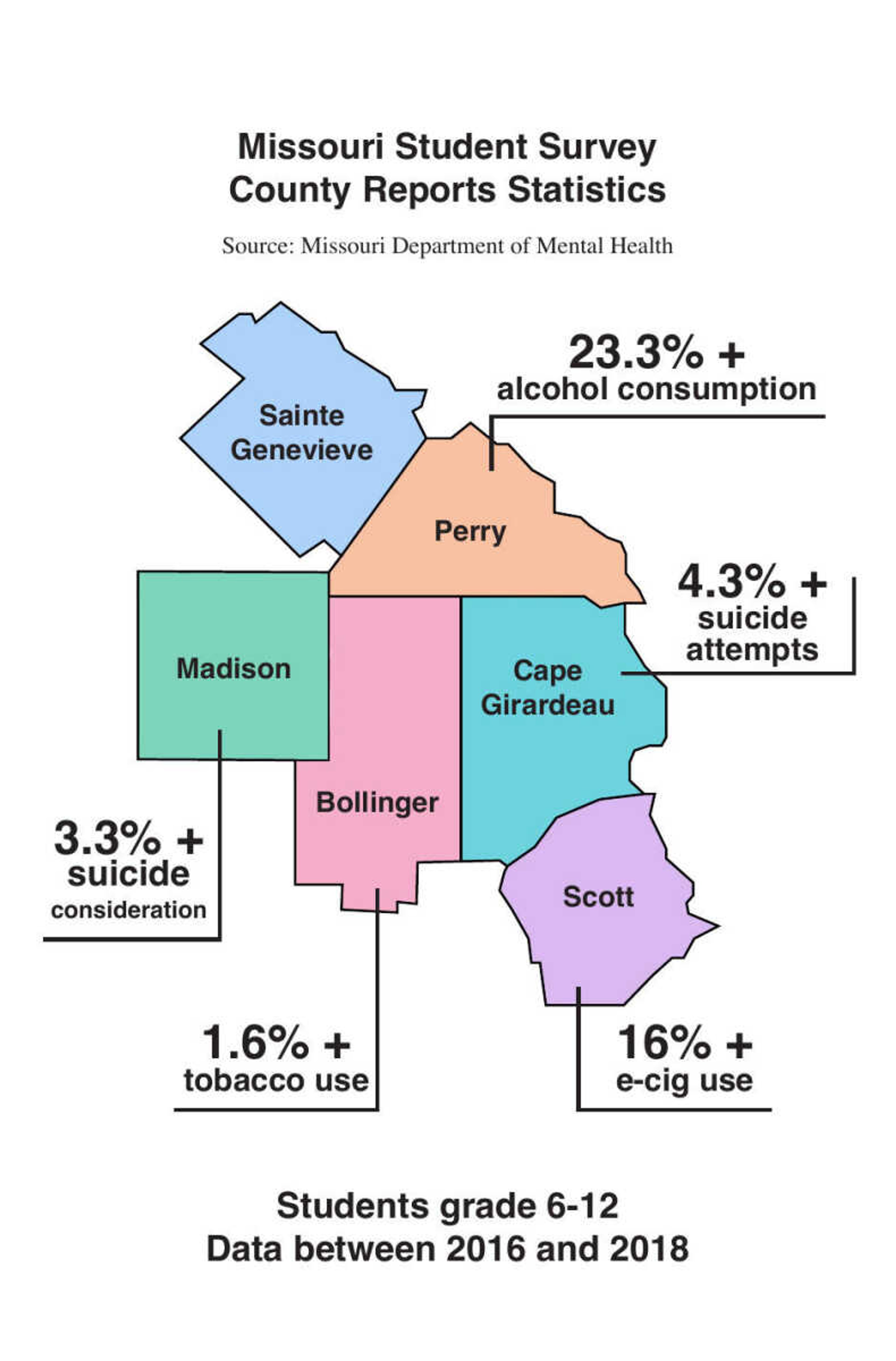More than 20 years after the Prevention Resource Center (PRC) was opened on Southeast’s campus, the center continues to be a place where those struggling can find help.
The center mainly focuses on youth and provides a variety of free services and resources to promote and facilitate the development of community substance misuse prevention initiatives in Service Area 21, a six-county area which includes Bollinger, Cape Girardeau, Madison, Perry, Scott and Sainte Genevieve counties.
In recent years the center has been strengthening its efforts to meet the growing needs of the community.
Prevention Advocate Annie Jansen became an employee at the center seven years ago and said every year since then there has been a steady increase in demand for their services.
The PRC is completely funded by grants from the Department of Mental Health: Division of Behavioral Health and each grant has a specific focus in the field of prevention, whether it be related to substance abuse or mental health. The age group for each grant also varies.
The center now has four grants: C2000, Mental Health, Tobacco and Partnership for Success (PFS).
Jansen explained how over the years the center has received more funding for different grants as the needs of the community have changed and increased, allowing the center to grow and have more opportunities to spread its reach within the community.
“Each year, our presence has been wanted more and more so that has been amazing to be able to get out there more and provide different services and programs,” Jansen said.
The Partnership for Success and Mental Health grants are both fairly new to the center. The PFS grant has been in place for four years and the Mental Health grant for five.
Jansen stressed the importance of including the Mental Health grant, especially as it relates to substance abuse.
“The mental health/first aid component is because there’s such a need for mental health [education] and there’s a connection between mental health and substance abuse,” Jansen said.
The center has also gained a variety of interactive displays including alcohol and marijuana goggles and a distracted driving activity kit. The center takes these displays to schools to accompany their presentations and show students the effects of drugs and alcohol.
They were also able to hire more full-time staff. Jansen said she was one of two full-time employees when she began working at the center.
The small powerhouse located near Parker Field is now made up of a director and five full-time employees.
Jansen said they have a promotional team that has been working to make the center visible to the community with different campaigns and strategies.
“Throughout the years, more and more organizations, more and more schools are hearing about us,” Jansen said. “Whether it be for professional development or school, presentations have increased.”
In addition to the center’s new promotional strategies, this increase can partially be attributed to the results of the Missouri Student Survey, which is distributed to public schools across the state.
The survey is conducted in even-numbered years to track risk behaviors of students in grades 6-12 and includes questions on alcohol, tobacco, drug use and other behaviors that endanger health and safety.
According to the results of the Missouri Student Survey, there is no data available for Sainte Genevieve county in 2016 or 2018 due either to small sample size or it being a single district.
From 2016 to 2018 most of the remaining five counties saw a steady increase in substance use involving tobacco, electronic cigarettes, hookahs and other water pipes, as well as alcohol and marijuana.
Students also reported an increase in bullying on school property, participating in physical fights, seriously considering suicide, and planning and attempting suicide. To view the full list of results visit the Missouri Department of Mental Health website at dmh.mo.gov.
Jansen explained how the results of the Missouri Student Survey are sent straight back to the schools, then the schools reach out to the Prevention Resource Center for programs in areas for which they see a need.
She added each county is different in their needs, so the presentations they do day-to-day vary.
She added because they cover such a wide variety of topics at the center, no two days are the same.
“Each day varies here at the Prevention Resource Center, and that’s what I love about it. No day is the same, and it truly has an impact on the community,” Jansen said.
She noted there has been a change in social climate towards topics like substance abuse and mental health, and these traditionally taboo topics becoming more socially acceptable to talk about could play a role in the increasing demand for services as well.
For more information about the Prevention Resource Center, visit semo.edu/preventionresourcecenter.





